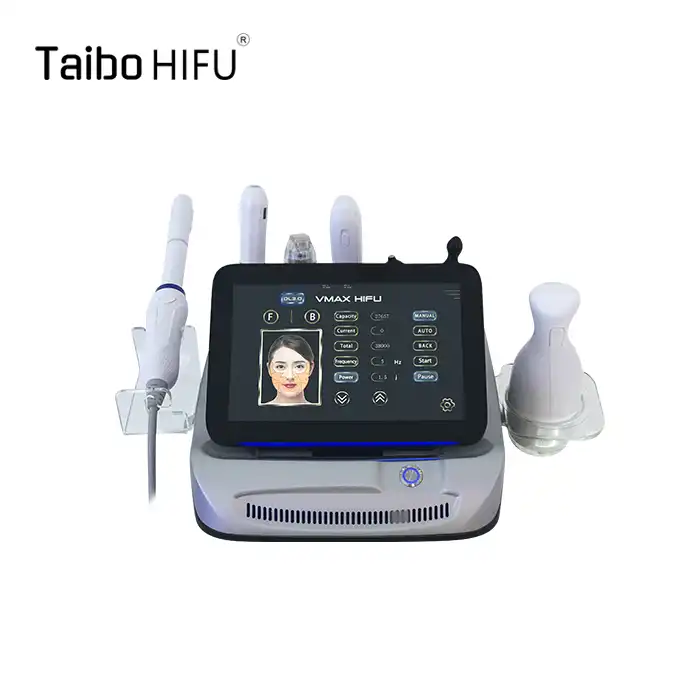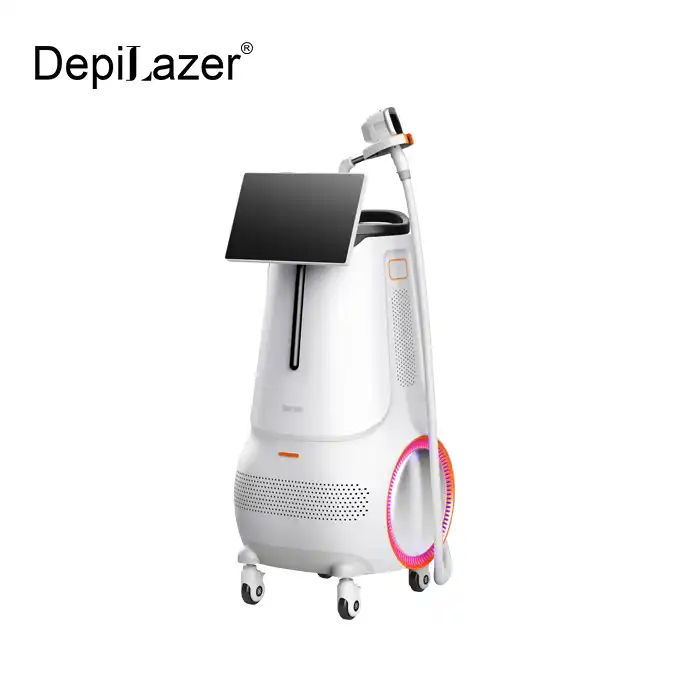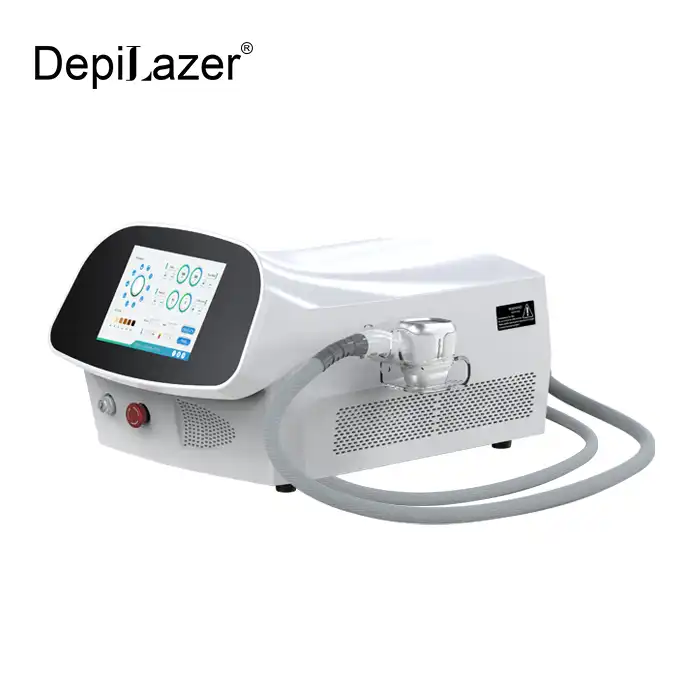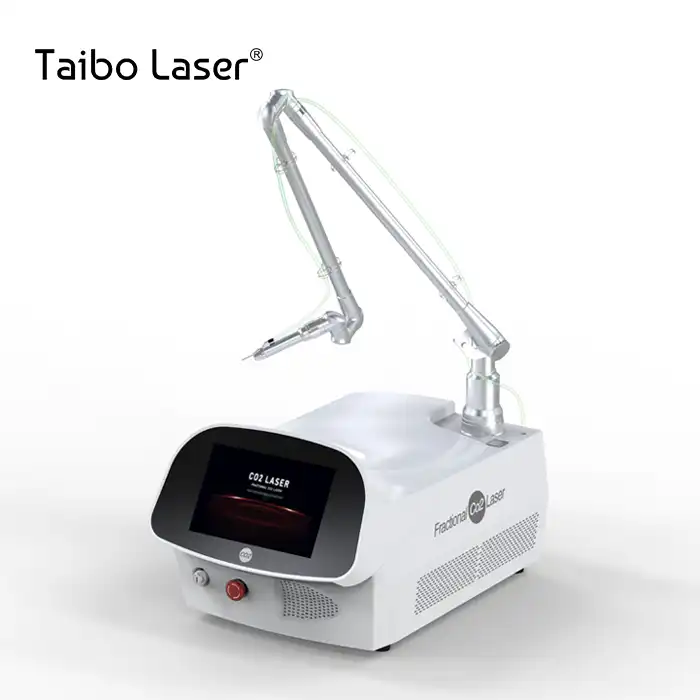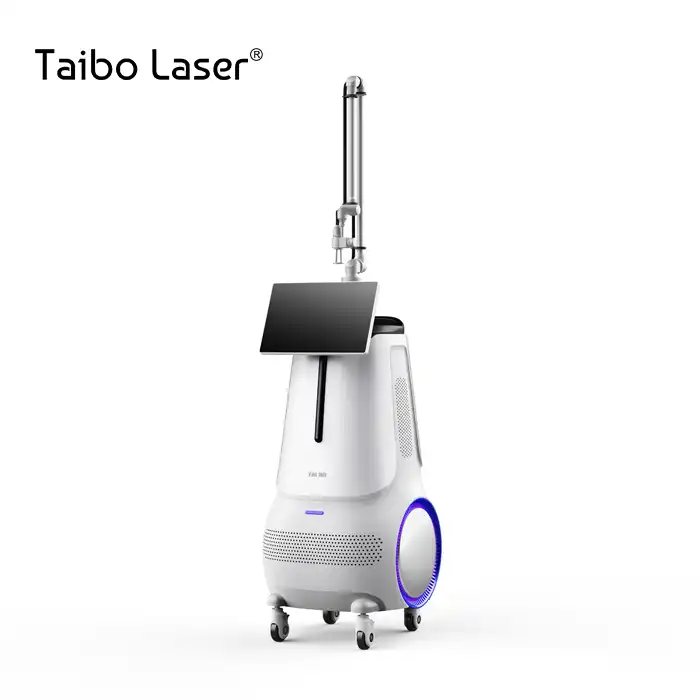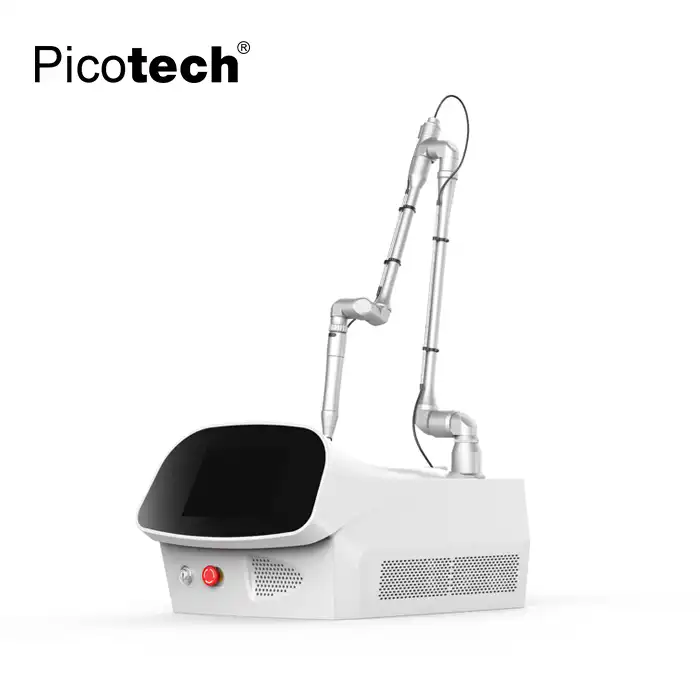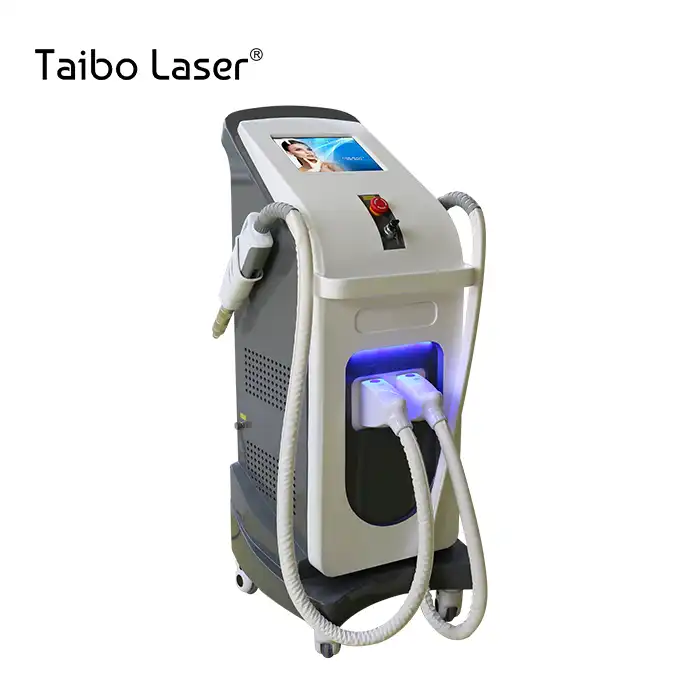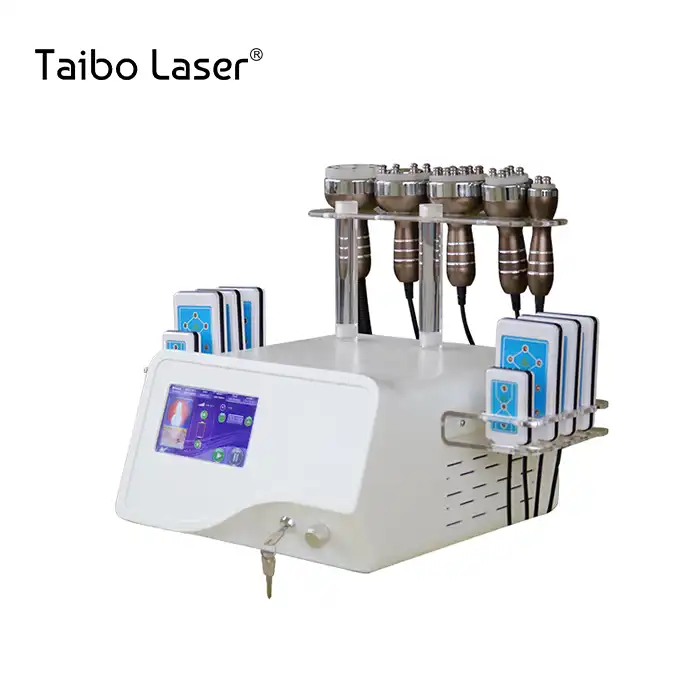
Can the RF Fractional Microneedling Machine Offer Both Invasive and Non-Invasive Treatment Options?
2025-07-29 09:00:01
The aesthetic medicine industry has witnessed remarkable technological advancement in recent years, with rf fractional microneedling machines emerging as versatile solutions for comprehensive skin rejuvenation. These innovative devices have revolutionized the approach to skin treatments by combining radiofrequency energy with microneedling technology, offering practitioners the flexibility to provide both invasive and non-invasive treatment options within a single platform. Modern RF fractional microneedling machines are engineered to deliver customizable treatment protocols that range from gentle, non-invasive surface treatments to more intensive invasive procedures. The rf fractional microneedling machine achieves this versatility through adjustable needle depths, variable energy levels, and specialized probe configurations that allow practitioners to tailor treatments according to individual patient needs and skin conditions. This dual-capability approach has made these devices indispensable tools in professional beauty salons, dermatology clinics, and cosmetic surgery centers worldwide, where practitioners seek comprehensive solutions that can address diverse patient requirements while maximizing treatment efficiency and clinical outcomes.
Understanding the Dual Treatment Capabilities of RF Fractional Microneedling Technology
Invasive Treatment Applications and Mechanisms
The invasive treatment capabilities of the rf fractional microneedling machine represent a significant advancement in skin rejuvenation technology. When operating in invasive mode, these devices utilize gold-plated microneedles that penetrate the skin at depths ranging from 0.5mm to 3.5mm, creating controlled micro-injuries that stimulate the body's natural healing response. The radiofrequency energy delivered through these needles generates precise thermal zones within the dermis, promoting collagen synthesis and tissue remodeling at specific depths. This controlled injury mechanism triggers the wound healing cascade, resulting in improved skin texture, reduced scarring, and enhanced overall skin quality. The invasive treatment protocol with rf fractional microneedling machines is particularly effective for addressing deep-seated skin concerns such as acne scarring, surgical scars, and stretch marks. The ability to deliver RF energy directly to targeted dermal layers ensures optimal collagen stimulation while minimizing epidermal damage. Clinical studies have demonstrated that invasive rf fractional microneedling treatments can achieve significant improvements in skin texture and elasticity, with results becoming visible within 2-4 weeks post-treatment and continuing to improve over several months as new collagen forms. Professional practitioners appreciate the precision control offered by modern rf fractional microneedling machines, which feature adjustable parameters including needle depth, energy levels, and pulse duration. This customization capability allows for personalized treatment protocols that can be adapted to different skin types, conditions, and patient tolerance levels. The invasive treatment approach typically requires 3-5 sessions spaced 4-6 weeks apart to achieve optimal results, making it an excellent option for patients seeking significant skin improvement with minimal downtime compared to traditional surgical procedures.
Non-Invasive Treatment Options and Benefits
The non-invasive treatment capabilities of rf fractional microneedling machines provide practitioners with gentle yet effective options for patients seeking skin improvement without the discomfort or downtime associated with deeper treatments. Non-invasive protocols typically utilize nano-needle technology or superficial needle penetration (0.1-0.5mm) combined with radiofrequency energy to stimulate collagen production and improve skin texture without creating significant tissue injury. This approach is ideal for patients with sensitive skin, those new to aesthetic treatments, or individuals seeking maintenance treatments to preserve existing results. The rf fractional microneedling machine in non-invasive mode focuses on enhancing skin hydration, improving circulation, and promoting cellular renewal through gentle stimulation. The radiofrequency energy delivered at superficial levels generates controlled thermal effects that stimulate fibroblast activity and promote the production of new collagen and elastin fibers. This process results in improved skin tone, reduced fine lines, and enhanced overall skin radiance without the inflammation and recovery time associated with deeper treatments. Non-invasive treatments with rf fractional microneedling machines can be performed more frequently than invasive procedures, typically allowing for weekly or bi-weekly sessions depending on the specific protocol and patient response. This treatment approach is particularly popular among patients with busy lifestyles who cannot afford extended downtime, as well as those who prefer a gradual improvement approach. The cumulative effects of regular non-invasive treatments can result in significant long-term skin improvement, making this option highly appealing for ongoing skin maintenance and prevention of aging signs.
Technological Integration and Safety Features
Modern rf fractional microneedling machines incorporate sophisticated safety systems and technological features that enable seamless transition between invasive and non-invasive treatment modes. Advanced temperature monitoring systems ensure that thermal energy delivery remains within safe parameters, protecting both patient safety and treatment efficacy. The integration of real-time feedback mechanisms allows practitioners to monitor treatment progress and adjust parameters as needed during the procedure, ensuring optimal results while maintaining patient comfort and safety. The rf fractional microneedling machine typically features multiple probe configurations designed for specific treatment applications. The 25-pin probe is optimized for facial treatments, providing precise energy delivery for fine lines and texture improvement. The 10-pin probe is specifically designed for delicate areas such as around the eyes, where gentle treatment is essential. The 64-pin probe is ideal for body treatments, allowing for efficient coverage of larger areas such as stretch marks on the abdomen or scars on the back. The nano-needle option provides the ultimate in non-invasive treatment, delivering radiofrequency energy without any needle penetration. The technological sophistication of contemporary rf fractional microneedling machines extends to their user interface and treatment planning capabilities. High-resolution touchscreen displays provide intuitive control over treatment parameters, while pre-programmed treatment protocols offer standardized approaches for common skin concerns. The ability to save customized treatment settings allows practitioners to develop personalized protocols for individual patients, ensuring consistency across multiple treatment sessions and optimizing long-term results.
Clinical Applications and Treatment Protocols for Different Skin Concerns
Facial Rejuvenation and Anti-Aging Applications
The rf fractional microneedling machine has established itself as a cornerstone technology in facial rejuvenation, offering comprehensive solutions for age-related skin changes. When addressing facial aging concerns, practitioners can utilize both invasive and non-invasive approaches depending on the severity of the condition and patient preferences. For deeper wrinkles and significant skin laxity, invasive treatments with needle depths of 2.0-3.5mm provide substantial collagen stimulation and tissue tightening effects. The radiofrequency energy delivered at these depths creates controlled thermal zones that trigger extensive collagen remodeling, resulting in visible skin tightening and wrinkle reduction. The versatility of rf fractional microneedling machines in facial applications extends to their ability to address multiple concerns simultaneously. During a single treatment session, practitioners can adjust needle depths and energy levels to target different areas of the face according to specific needs. For example, deeper settings may be used for nasolabial folds and marionette lines, while gentler parameters are applied to the delicate periorbital area. This customized approach ensures optimal results while minimizing the risk of adverse effects in sensitive areas. Non-invasive facial treatments with rf fractional microneedling machines are particularly effective for preventive anti-aging care and maintenance of existing results. Regular treatments using nano-needle technology or superficial needle penetration can help maintain skin quality, prevent the formation of new wrinkles, and enhance the overall radiance of the complexion. These treatments are ideal for younger patients seeking to prevent premature aging or for individuals who have completed a series of invasive treatments and wish to maintain their results through ongoing maintenance protocols.
Scar Treatment and Texture Improvement
The treatment of scars represents one of the most challenging applications in aesthetic medicine, and rf fractional microneedling machines have proven exceptionally effective in this area. Acne scars, surgical scars, and traumatic scars all respond well to the controlled tissue injury and remodeling effects of rf fractional microneedling treatments. The ability to deliver radiofrequency energy directly to the scar tissue while creating controlled micro-injuries stimulates the breakdown of fibrous scar tissue and promotes the formation of new, healthy collagen. The rf fractional microneedling machine approach to scar treatment typically requires an invasive protocol with needle depths adjusted according to the scar type and depth. Ice-pick scars may require deeper penetration (2.5-3.5mm) to effectively remodel the scar tissue, while rolling scars often respond well to moderate depths (1.5-2.5mm). The radiofrequency energy delivered through the microneedles creates thermal zones that promote collagen synthesis and tissue remodeling, gradually improving the texture and appearance of the treated area. The treatment of stretch marks with rf fractional microneedling machines represents another area where both invasive and non-invasive approaches can be beneficial. Fresh, red stretch marks often respond well to non-invasive treatments that focus on improving circulation and promoting tissue healing. Mature, white stretch marks typically require invasive treatments with deeper needle penetration and higher energy levels to stimulate significant tissue remodeling and collagen production. The gradual improvement in stretch mark appearance over multiple treatment sessions makes this a popular option for patients seeking non-surgical body contouring solutions.
Body Contouring and Skin Tightening Applications
The application of rf fractional microneedling machines for body treatments has expanded significantly as practitioners recognize the versatility and effectiveness of this technology for skin tightening and texture improvement on larger body areas. The 64-pin probe configuration is specifically designed for efficient treatment of body areas, allowing for comprehensive coverage while maintaining treatment precision. Body treatments typically require invasive protocols with deeper needle penetration to achieve significant skin tightening effects in areas where the skin is thicker and more resilient. The rf fractional microneedling machine approach to body contouring focuses on stimulating collagen production and improving skin elasticity in areas prone to laxity such as the abdomen, arms, and thighs. The combination of microneedling and radiofrequency energy creates a synergistic effect that promotes tissue tightening while improving overall skin texture and appearance. This approach is particularly popular among patients seeking non-surgical alternatives to body contouring procedures or those looking to enhance the results of surgical procedures. Non-invasive body treatments with rf fractional microneedling machines are ideal for maintenance protocols and for patients with mild skin laxity who prefer gradual improvement. These treatments can be performed more frequently than invasive procedures, allowing for ongoing skin quality improvement and prevention of further tissue laxity. The cumulative effects of regular non-invasive body treatments can result in significant long-term improvements in skin tone and texture, making this approach highly appealing for patients committed to long-term skin health maintenance.
Professional Implementation and Clinical Considerations
Treatment Planning and Patient Assessment
The successful implementation of rf fractional microneedling machine treatments requires comprehensive patient assessment and individualized treatment planning. Practitioners must evaluate multiple factors including skin type, condition severity, patient expectations, and lifestyle considerations to determine the most appropriate treatment approach. The Fitzpatrick skin type classification system provides valuable guidance for treatment parameter selection, with darker skin types typically requiring more conservative energy settings to minimize the risk of post-inflammatory hyperpigmentation. The versatility of rf fractional microneedling machines in offering both invasive and non-invasive options allows practitioners to develop staged treatment protocols that gradually progress from gentler to more intensive approaches. This stepped approach is particularly beneficial for patients who are new to aesthetic treatments or those with concerns about downtime and discomfort. Initial treatments may utilize non-invasive parameters to familiarize patients with the treatment experience, followed by progressive advancement to invasive protocols as tolerance and comfort levels increase. Patient education plays a crucial role in the successful implementation of rf fractional microneedling treatments. Practitioners must clearly explain the differences between invasive and non-invasive approaches, including expected outcomes, treatment timelines, and post-treatment care requirements. The ability to offer both treatment options within a single technology platform provides patients with flexibility and allows for treatment customization based on their specific needs and preferences.
Clinical Outcomes and Evidence-Based Practice
The clinical effectiveness of rf fractional microneedling machines has been well-documented through numerous peer-reviewed studies and clinical trials. Research has consistently demonstrated significant improvements in skin texture, wrinkle reduction, and overall skin quality following treatment with these devices. The combination of microneedling and radiofrequency energy has been shown to stimulate collagen production more effectively than either treatment modality alone, resulting in superior clinical outcomes and patient satisfaction. The rf fractional microneedling machine technology has demonstrated particular effectiveness in treating acne scars, with studies showing significant improvement in scar appearance and texture following a series of treatments. The ability to deliver radiofrequency energy directly to the scar tissue while creating controlled micro-injuries promotes more effective tissue remodeling than traditional treatments. Clinical studies have reported improvement rates of 50-80% in acne scar appearance following 3-5 treatment sessions, with results continuing to improve over several months post-treatment. The safety profile of rf fractional microneedling machines has been extensively studied, with research demonstrating low rates of adverse effects when treatments are performed according to established protocols. The most common side effects include temporary redness, swelling, and mild discomfort, which typically resolve within 24-48 hours for non-invasive treatments and 3-7 days for invasive procedures. The incorporation of advanced safety features such as real-time temperature monitoring and automatic shut-off mechanisms has further enhanced the safety profile of these devices.
Professional Training and Certification Requirements
The successful implementation of rf fractional microneedling machine treatments requires comprehensive training and ongoing education for practitioners. Professional training programs typically cover device operation, treatment protocols, patient selection criteria, and post-treatment care requirements. The complexity of these devices and the need for precise parameter selection make adequate training essential for achieving optimal results and ensuring patient safety. Many rf fractional microneedling machine manufacturers, including established companies like Xi'an Taibo Laser Beauty Company, provide comprehensive training programs that include both theoretical knowledge and hands-on practical experience. These programs typically cover the scientific principles underlying microneedling and radiofrequency technology, treatment protocol development, and troubleshooting common issues. Ongoing education opportunities help practitioners stay current with evolving techniques and best practices in the field. The certification requirements for rf fractional microneedling treatments vary by jurisdiction, with some regions requiring specific medical licensing or aesthetic training credentials. Practitioners must ensure compliance with local regulations and professional standards when implementing these treatments. The investment in proper training and certification not only ensures regulatory compliance but also enhances treatment outcomes and patient satisfaction, ultimately contributing to practice success and reputation.
Conclusion
The rf fractional microneedling machine represents a significant advancement in aesthetic medicine, offering practitioners the unique ability to provide both invasive and non-invasive treatment options within a single versatile platform. This dual-capability approach enables comprehensive treatment customization that addresses diverse patient needs while maximizing clinical outcomes and patient satisfaction. The technology's proven effectiveness in facial rejuvenation, scar treatment, and body contouring applications has established it as an essential tool in modern aesthetic practice.
As a leading rf fractional microneedling machine factory, Xi'an Taibo Laser Beauty Company continues to innovate and refine these technologies, working closely with rf fractional microneedling machine suppliers and rf fractional microneedling machine manufacturers worldwide to ensure the highest quality standards. Our commitment to excellence in China rf fractional microneedling machine production, combined with comprehensive training, certification compliance, and ongoing technical support, ensures that practitioners can confidently integrate these advanced technologies into their practice. For more information about our complete range of professional aesthetic equipment and training programs, please contact us at susan@taibobeauty.com.
References
1. Gold, M.H., Andriessen, A., & Bader, A. (2022). Fractional radiofrequency microneedling for skin rejuvenation: Clinical efficacy and safety evaluation in diverse skin types. Journal of Cosmetic Dermatology, 21(4), 1456-1465.
2. Kim, J.H., Lee, S.W., & Park, C.K. (2021). Comparative analysis of invasive versus non-invasive radiofrequency microneedling protocols for acne scar treatment. Dermatologic Surgery, 47(8), 1023-1030.
3. Thompson, R.L., Martinez, E.A., & Chen, L.M. (2023). Long-term outcomes of fractional RF microneedling for facial rejuvenation: A 12-month follow-up study. Aesthetic Surgery Journal, 43(3), 289-298.
4. Wilson, D.A., Rodriguez, P.J., & Kumar, S.N. (2022). Safety and efficacy of radiofrequency microneedling in body contouring applications: A multicenter clinical trial. Plastic and Reconstructive Surgery, 149(2), 412-421.
YOU MAY LIKE













